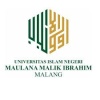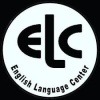IMPROVING READING SKILLS IN THE USE OF QUESTION AND ANSWER
Abstract
This paper discusses the nature of reading comprehension, types of comprehension, why questioning helps students comprehend texts better. It also correlates to the advantages of using Questions-Answer Relationship (QAR) to improve students’ reading comprehension skills and the application of QAR. the paper concludes with several suggestions for classroom in the university level. This research was planned for collaborative classroom activity where the writer (acted as the instructor) and his collaborator (acted as the observer) worked together on the methods of this research, specifically: preparatory, planning, actualizing the plan, observing the activity, and reflecting the result of the activity. The subjects of this research were 30 English students at English education department in the university. For the data collection, the writer employed the checklist, field notes, and test. All the data collection were analyzed descriptively, and the results were compared with the criteria of success in this article to see whether the criteria of success had been accomplished or not.
Full Text:
PDFReferences
Burns, P. C., Roe, B., & Ross, E. P. (1996). Teaching reading in today’s elementary schools. Boston: Houghton Mifflin.
Cahyono, B.Y. (1992). The questioning skills of reading teachers. TEFLIN Journal, 5 (1), 69-83.
Cahyono, B.Y., & Widiati, U. (2006). The teaching of EFL reading in the Indonesian context. The State of the Art. TEFLIN Journal, 17(1), 37-56.
Coe, V. Z., & Glass, C. (2005). Modified QAR. Retrieved from http://www.ford.ucf.edu/strattegies/stratqar.html
Corner, J. (2006). Instructional reading strategy: QAR (question/answer relationship). Retrieved from http://www.indiana.edu/l517 /QAR.htm
Crawley, S. J., & Mountain, L. (1995). Strategies for guiding content reading. Massachusetts: A Simon and Schuster.
Depdiknas. (2007). Panduan lengkap KTSP (kurikulum tingkat satuan pendidikan). Yogyakarta: Pustaka Yustisia.
English Online. (2009). Reading strategies: Middle school edition. Content Area. Retrieved from http://www.state.tn.us/education/ci/reading/grades. 6-8.pdf.
Fachrurrazy. (2008). Teaching English as a foreign language. Probolinggo: State University of Probolinggo.
Grady, W., Dobrovolsky, M., & Aronoff, M. (1989). Contemporary linguistics. An introduction. New York: St. Martin’s Press.
Jones, R. C. (2006). Question-answer relationship. Retrieved from http://www.qar-expl.htm
Kemmis, S., & Mc Taggart. (1992). The action research planner. Geelong: Deakin University Press.
Mikulecky, B. S., & Jeffries, L. (1996). More reading power. USA: Addison-Wesley Publishing.
Ridwan, E. C., Moorees, I. & Suharna. (1996). EFL reading comprehension texts: In search of appropriateness. TEFLIN Journal, 7 (1), 70-79.
Roe, D. B., Stoodt, B. D., & Burns, P. C. (1995). Secondary school reading instruction: The content areas. Boston: Houghton Mifflin.
Vacca, R. T., & Vacca, J. A. L. (1999). Content area reading, New York: Adison-Wesley Educational.
DOI: https://doi.org/10.18860/jeasp.v3i2.11123
Refbacks
- There are currently no refbacks.

This work is licensed under a Creative Commons Attribution-ShareAlike 4.0 International License.







Editorial Office:
Pusat Pengembangan Bahasa
Program Khusus Pengembangan Bahasa Inggris (PKPBI)
Universitas Islam Negeri Maulana Malik Ibrahim Malang
Gedung C lantai 1
Jl. Gajayana No 50 Kota Malang, Jawa Timur, Indonesia
Kode Pos 65144, Telp/Fax : (0341) 570872
Email: jeasp@uin-malang.ac.id
JEASP : Journal of English for Academic and Specific Purposes is licensed under a Creative Commons Attribution-ShareAlike 4.0 International











